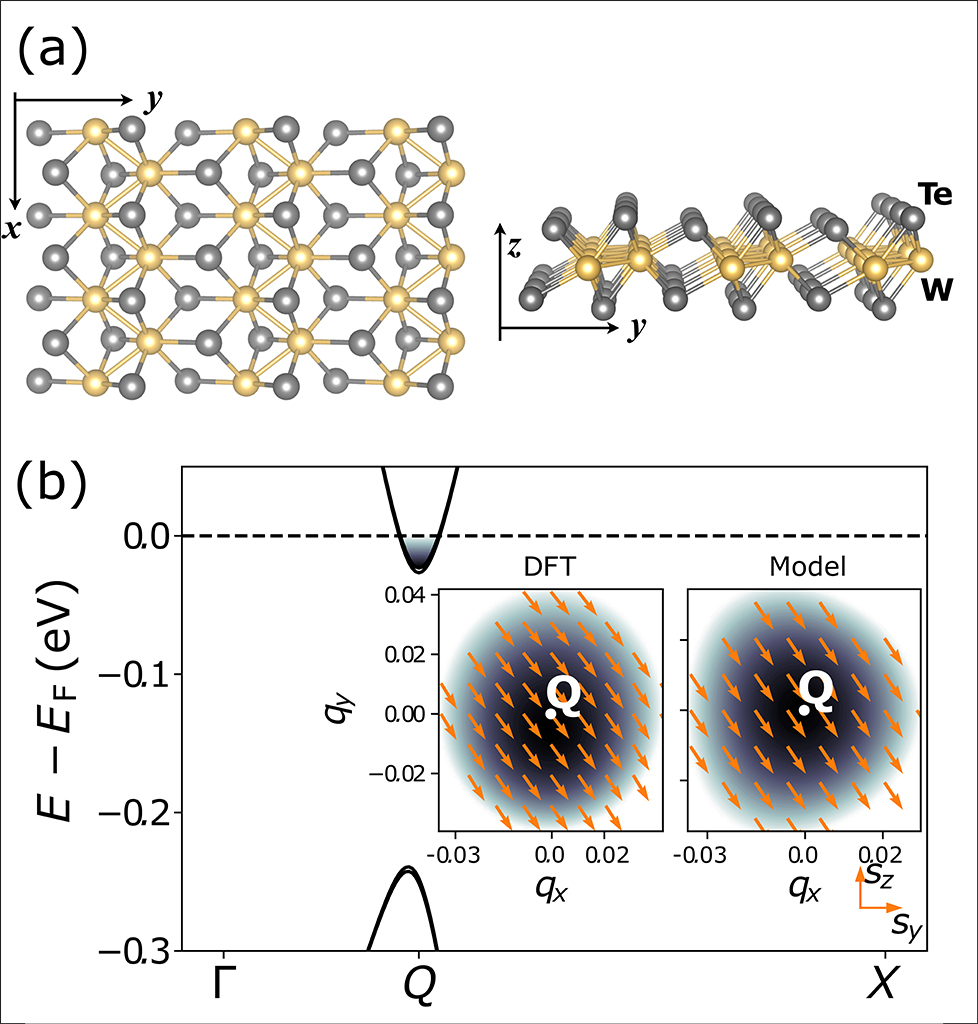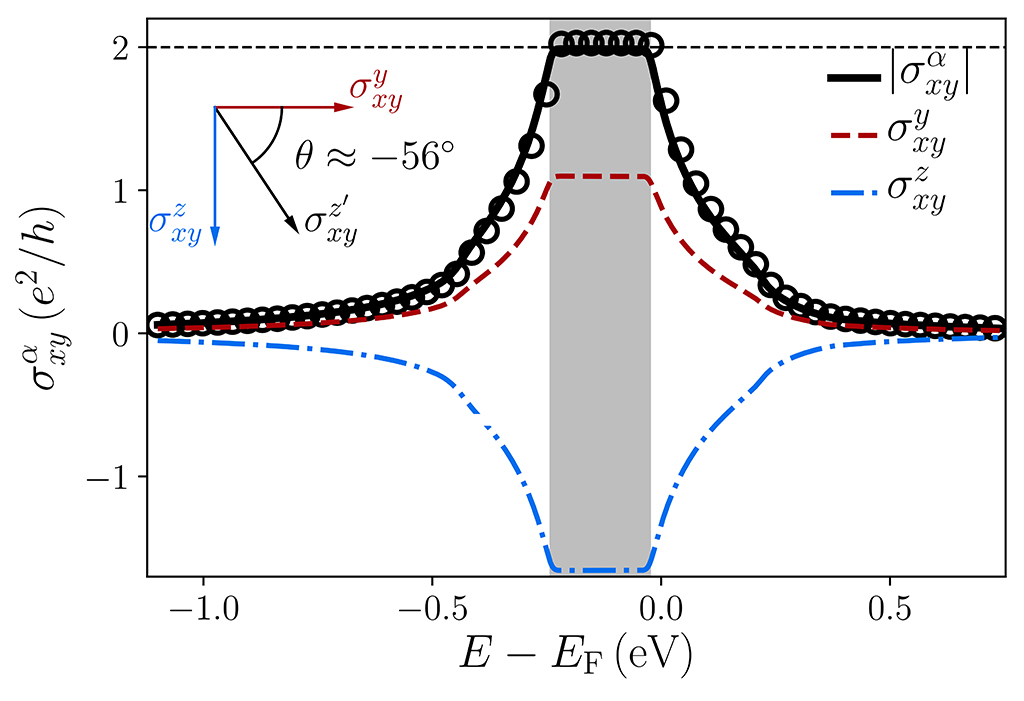The ability to control and manipulate spin in materials is at the basis of spintronics, a field of research and branching sector of electronics that aims at using spin to carry and propagate information. Spin related phenomena are studied in order to take advantage of peculiar characteristics exhibited by some materials. Among them, transition metal dichalcogenide (TMDs) monolayers are particularly interesting. These two-dimensional materials exhibit an unusual spin-charge interconversion and topological characteristics, which are extremely relevant to their application.
We recently predicted some unique features of a low-symmetry structural phase of the tungsten ditelluride (WTe2) monolayer which suggests alternative ways to manipulate spin information. Quantum transport simulations and modelling show that the structure of this material leads to an unprecedented canted quantum spin Hall (QSH) effect, which is stands as a new paradigm for topological physics.
Typically, the strong symmetry in 2D materials’ structure compel the spins to align with one of the crystalline directions. In absence of such constrains, spins can assume arbitrary orientations. This is what happens in the so-called distorted octahedral phase (1T’) of the WTe2 monolayer, exhibiting a low-symmetry structure. While the traditional quantum spin Hall effect is usually associated with spin polarization pointing perpendicularly to the conducting plane, here a so-far-unique QSH effect defined by an oblique spin polarization axis is predicted. The orientation of this axis is prescribed by the spinorbit coupling parameters, which are tuneable via a number of means: strain, electrostatic gates, substrates choice, or pressure.
Remarkably, our predicted novel canted QSHE predictions has been confirmed experimentally by various groups just a couple of weeks ago. This research opens a new avenue for spintronics, in which spins can be controlled through the electronic environment, instead of by conventional magnetic means.

